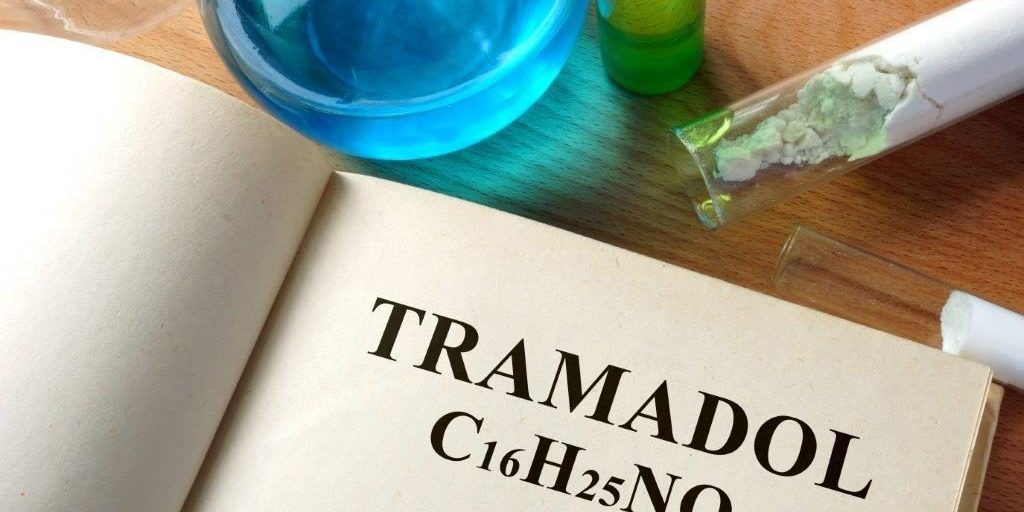
Safe Usage of OTC Drugs: Essential Tips and Guidelines
Welcome to your comprehensive guide on safely navigating the world of OTC (over-the-counter) drugs. In this essential read, we dive into critical tips and strategies to maximize the benefits...
Embarking on a tramadol detox journey can be a pivotal step towards reclaiming your health and well-being. This comprehensive guide is designed to navigate you through the complexities of tramadol withdrawal, highlighting the symptoms you may encounter, the timeline you can expect, and the various detox options available to you, including rapid detox for tramadol. Understanding the nuances of tramadol detox is crucial for a safe and effective withdrawal process, ensuring you have the knowledge and support needed to transition smoothly into a tramadol-free life.
Tramadol, like morphine, binds to opioid receptors in the brain, alleviating pain and inducing euphoria. Over time, the body adapts to the presence of tramadol, requiring higher doses to achieve the same level of pain relief or euphoric effects. This phenomenon, known as tolerance, is a hallmark of addiction.
As tolerance develops, individuals may engage in behaviors to maintain their opioid levels, such as increasing their dosage, taking the medication more frequently, or adopting alternative methods of administration, such as snorting or injecting. These behaviors can lead to physical dependence, a physiological state characterized by withdrawal symptoms when the drug is abruptly stopped or significantly reduced.
Overcoming tramadol addiction is a challenging yet achievable endeavor. Seeking professional help is the cornerstone of recovery, as it provides individuals with the necessary guidance, support, and treatment options to break free from addiction’s grip.
Our comprehensive tramadol detox program is designed to address the physical and psychological aspects of tramadol withdrawal, ensuring a safe and effective transition to an opioid-free life. Our experienced medical team will carefully assess your individual needs and tailor a treatment plan that aligns with your unique circumstances.
We recognize that each individual’s journey is unique, and we offer a variety of tramadol detoxification programs to meet your specific needs:
If you or someone you know is struggling with tramadol addiction, our expert care and support can guide you towards a healthier, addiction-free future. Contact us today and take the first step towards reclaiming your life.

Speak Confidentially
with an opiate detox treatment expert.
Experiencing tramadol withdrawal symptoms can be a challenging and uncomfortable process. Tramadol hydrochloride, also known as Ultram, shares similarities with narcotic analgesics and has the potential to become habit-forming, leading to both physical and psychological dependence.
When individuals abruptly stop using Tramadol or attempt to reduce their dosage, they may encounter a range of withdrawal symptoms that can impact their well-being. These symptoms can include:
Specialized programs such as Waismann Method, recognize the challenges of Tramadol withdrawal symptoms and offer effective management solutions. These programs equip patients with the necessary support, medical expertise, and comfort to successfully navigate this phase of recovery. Remember, seeking professional assistance and supervision is crucial to ensuring your well-being throughout the withdrawal process.
At our esteemed hospital, we specialize in tramadol detoxification, fully understanding the challenges and complexities that come with breaking free from this powerful opioid. Our dedicated team consists of compassionate doctors, nurses, and addiction specialists who are passionate about your recovery. With years of experience in addiction medicine, we prioritize your well-being and provide a safe and nurturing environment.
In recent years, there has been a significant increase in the use and abuse of prescription opiates, including Tramadol. This has led to more people seeking detoxification from these substances. At our facility, we are proud to offer the Waismann Method®, a pioneering opiate treatment known for its safety and effectiveness. We utilize advanced medical and psychological techniques to ensure that you receive the highest quality care.
As a leading center for opioid dependence treatment and detoxification, we offer a variety of programs to meet your specific needs. Whether you require rapid opiate detoxification under sedation, medically assisted detoxification, or other treatment forms available at Domus Retreat, we are here to help. Over the years, our comprehensive services have successfully aided countless individuals worldwide in overcoming this serious problem.
At our facility, your success is our top priority. Our dedicated professionals will support you throughout your journey to a drug-free life, providing the medical and psychological assistance you need. We understand the challenges you face, and our goal is to empower you with the tools and strategies necessary for a successful recovery.
If you or someone you know is seeking Tramadol detoxification, we are here to provide expert care and support. Contact us today and take the first step towards a healthier, addiction-free future.
Contact us and learn more about the best treatment options available for you!
Embarking on the journey of tramadol detoxification at home is a significant step towards recovery and regaining freedom from dependency. It’s crucial to understand the timeline and what to expect during this process, especially when proceeding without direct medical assistance. This prepares you for the challenges ahead and helps set realistic expectations for the road to recovery. The tramadol detox timeline can vary widely from person to person, but the following is a general guide to help you understand the stages of withdrawal and recovery you might face at home.
Remember, detoxing at home without medical supervision carries risks, and the symptoms described below may be more challenging to manage on your own. It’s strongly recommended to seek professional advice even if you plan to detox at home, to ensure your safety throughout the process.
Detoxing at home without medical assistance means you’ll need to prepare for these stages on your own, recognizing when and if professional help becomes necessary. Always keep emergency contacts and be ready to seek medical attention if symptoms become too severe to manage safely at home.
For individuals undergoing medically assisted detox, the process typically spans 5 to 10 days, with approximately 2 days spent at our hospital and the remaining time at our exclusive recovery center. Throughout the hospital phase, patients receive comprehensive and continuous medical support, ensuring their safety and well-being. Our detox program encompasses the administration of appropriate medications to effectively manage and alleviate withdrawal symptoms while closely monitoring vital signs and other physiological responses.
Once patients are physically stable, their recovery continues at our renowned Domus Retreat, where they are provided with a private suite and round-the-clock care. Our exclusive retreat offers a range of therapeutic services, including IV therapy, individual counseling, and therapeutic massage, among others, to enhance the comfort and success of the detoxification process.
The duration of medically assisted detox may vary based on the individual’s health condition, the severity of dependence, and their response to treatment. Our expert medical team carefully tailors the detox program to meet the unique needs of each patient, ensuring a personalized and effective approach.
At Waismann Method Ultram Treatment, we understand the importance of creating a comfortable and supportive environment for individuals on their journey to recovery. Our dedicated professionals work tirelessly to provide the highest level of care, ensuring that patients receive the medical attention and emotional support they need during this critical phase.
If you or someone you know is seeking Tramadol detoxification, we are here to help. Our comprehensive medically assisted detox program offers a safe, comfortable, and successful path to breaking free from Tramadol dependence. Contact us today to take the first step towards regaining control of your life and embracing a healthier, drug-free future.
At Waismann Method, we understand the challenges and struggles faced by individuals grappling with Ultram addiction. Our commitment to providing the highest level of care, combined with our expertise in Tramadol detoxification, sets us apart as the premier destination for those seeking help. With our renowned rapid and medical detox programs, we offer a safe, effective, and compassionate approach to breaking free from Ultram addiction. Our track record of success, experienced medical professionals, and individualized treatment plans make Waismann Method the trusted choice for individuals ready to reclaim their lives from Ultram addiction. Take the first step towards lasting recovery and contact us today to embark on your transformative journey.
If you or someone you care about is in need of the best Tramadol detox and addiction treatment program available, don’t wait any longer. Take action today and call us now at 1-800-423-2482. Our dedicated team is here to assist you every step of the way, providing you with the information and support you need to make the best treatment choice. Your journey to recovery starts with a simple phone call. Don’t hesitate, reach out to us now and let us guide you towards a healthier, addiction-free future.
What's New at Waismann Method®
Safe Usage of OTC Drugs: Essential Tips and Guidelines
Welcome to your comprehensive guide on safely navigating the world of OTC (over-the-counter) drugs. In this essential read, we dive into critical tips and strategies to maximize the benefits...
Substance use disorders (SUDs) and mental health issues share a complex relationship, often intertwining and amplifying each other’s effects. In this blog, we delve into the vital role of...
Understanding Naltrexone and Naloxone Differences
In the realm of opioid addiction treatment and emergency overdose reversal, Naltrexone and Naloxone stand out as critical medications. Although both belong to the opioid antagonist class, their unique...



Get Newsletter Updates from Waismann Method®
"*" indicates required fields
We are available 7 days a week
DISCLAIMER: The text presented on this page is not a substitute for professional medical advice. It is for your information only and may not represent your true individual medical situation. Do not hesitate to consult your healthcare provider if you have any questions or concerns. Do not use this information to diagnose or treat a health problem or disease without consulting a qualified healthcare professional. Be advised that Opiates.com articles are derived from various sources and may not reflect your own country’s regulations.